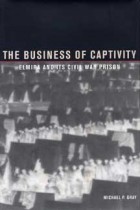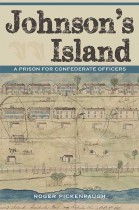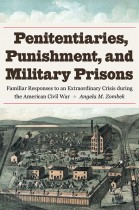Crossing the Deadlines
Civil War Prisons Reconsidered
Civil War Era, History, U.S. History, Understanding Civil War HistoryMichael P. Gray
The “deadlines” were boundaries prisoners had to stay within or risk being shot. Just as a prisoner would take the daring challenge in “crossing the deadline” to attempt escape, Crossing the Deadlines crosses those boundaries of old scholarship by taking on bold initiatives with new methodologies, filling a void in the current scholarship of Civil War prison historiography, which usually does not go beyond discussing policy and prison history. Due to its eclectic mix of contributors—from academic and public historians to anthropologists currently excavating at specific stockade sites—the collection appeals to a variety of scholarly and popular audiences. Readers will discover how the Civil War incarceration narrative has advanced to include environmental, cultural, social, religious, retaliatory, racial, archaeological, and memory approaches. As the historiography of Civil War captivity continues to evolve, readers of Crossing the Deadlines will discover elaboration on themes that emerged in William Hesseltine’s classic collection, Civil War Prisons, as well as interconnections with more recent interdisciplinary scholarship. Rather than being dominated by policy analysis, this collection examines the latest trends, methodologies, and multidisciplinary approaches in Civil War carceral studies. Unlike its predecessor, which took a micro approach on individual prisons and personal accounts, Crossing the Deadlines is a compilation of important themes that are interwoven on broader scale by investigating many prisons North and South. Although race played a major role in the war, its study has not been widely integrated into the prison narrative; a portion of this collection is dedicated to the role of African Americans as both prisoners and guards and to the slave culture and perceptions of race that perpetuated in prisons. Trends in environmental, societal, and cultural implications related to prisons are investigated as well as the latest finds at prison excavation sites, including the challenges and triumphs in awakening Civil War prisons’ memory at historical sites.





